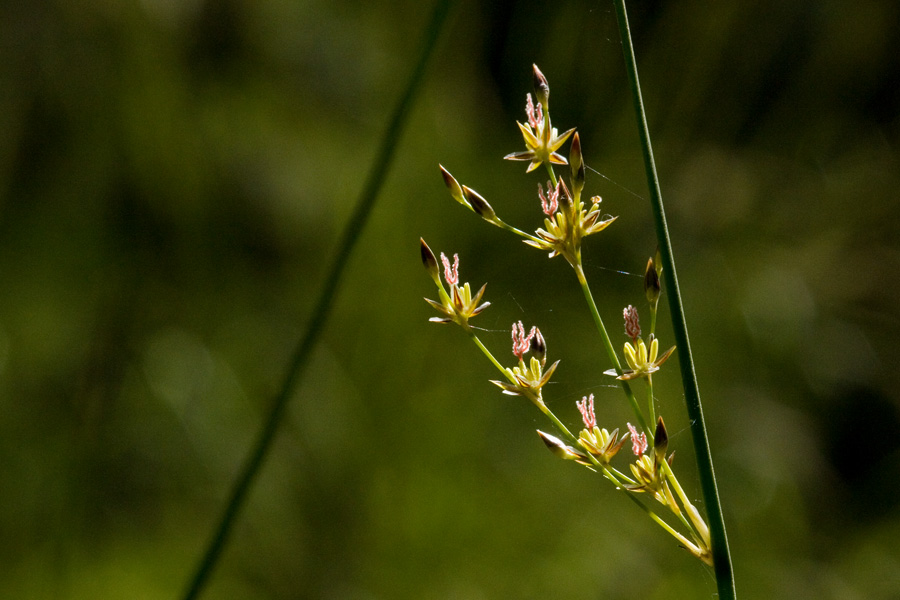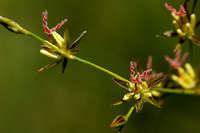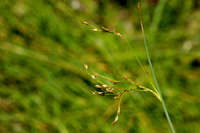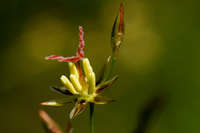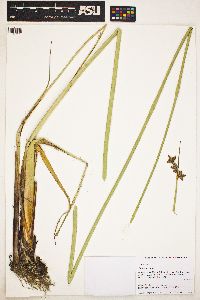|
|
|
|
Family: Juncaceae
Alaska rush, more...arctic rush, mountain rush
|
Herbs, perennial, 2--10 dm. Rhizomes long- creeping. Culms erect, 1--3 mm diam. Cataphylls several. Leaves: blade usually absent (present in var. mexicanus). Inflorescences lateral, 3--many-flowered, loose to congested; primary bract barely exceeding to many times longer than inflorescence. Flowers variously pedicellate; bracteoles membranous; tepals chestnut brown or paler, lanceolate, (2.5--)3.3--5.5(--6) mm, margins clear; inner series loosely subtending capsule at maturity; usually slightly shorter, margins scarious to clear, apex acutish to obtuse; stamens 6, filaments 0.2--1.1 mm, anthers 0.9--2.2 mm; style 0.9--1.5 mm. Capsules 3-locular or infrequently pseudo-3-locular, oblate to narrowly ovoid, 3.5--4(--4.5) mm, equal to or exceeding perianth. Seeds dark amber, oblate to ellipsoid, 0.6--0.8 mm. Numerous entities have been circumscribed and recognized at various nomenclatural ranks by a plethora of authors addressing state or regional floras. In considering the Juncus arcticus-balticus complex as a whole in North America, one is soon confronted with a wide-ranging and obviously polymorphic complex that has not read the literature. It is abundantly clear that the systematics of the group will not be solved on the basis of morphology alone and that resolution of the problem is ripe for molecular investigations.
Stems arising in rows from long rhizomes, simple, 4-8 dm, finely and irregularly striate, without foliage lvs; basal sheaths to 12 or 15 cm, mucronate, bladeless; invol lf to 18 cm, a fifth to a third as long as the stem and appearing as a continuation of it; infl apparently lateral, capitate to diffuse, (1-)3-5(-12) cm; inner prophyll broadly round obovate; tep lanceolate, 3.3-4.7 mm, acuminate, with a conspicuous dark stripe on each side of the midrib; anthers 6, 2-4 times as long as the filaments; fr trilocular, acute, short-beaked, exceeding the perianth by 0.5-1 mm; 2n=40, 80, 84. Calcareous or brackish shores and dunes, and also inland; circumboreal, in our range s. to Pa. and
Mo., especially abundant along the shores of the Great Lakes; S. Amer. (incl. J. balticus) Polymorphic; our plants may be referred to var. littoralis (Engelm.) B. Boivin. Gleason, Henry A. & Cronquist, Arthur J. 1991. Manual of vascular plants of northeastern United States and adjacent Canada. lxxv + 910 pp. ©The New York Botanical Garden. All rights reserved. Used by permission. |


